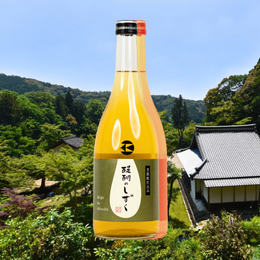Minenohakubai Shuzo (峰乃白梅酒造): A Contemporary Taste Rooted in Tradition Heritage and Terroir; Taste Testing The Ryoko New Niigata Dry (菱湖純米ドライ) & Ryoko Local Gohyakumangoku Junmai Daiginjo (菱湖 五百万石)

Mt. Kakuda
Founded about 400 years ago at the foot of Mount Kakuda, Minenohakubai Shuzo is the second oldest sake brewery in Niigata Prefecture. Historically, it helped fuel the local sake boom. Till today, it enjoys a strategic location that benefits from nature. Frigid winter winds from the Sea of Japan blow down over the mountains, creating an ideal low-temperature environment during the sake brewing season. Rainfall on the mountains percolates through layers of black granite, emerging as high-quality water that springs up around the brewery. Due to these naturally endowed conditions, it is no surprise that the resulting sake is of high quality.
Tradition Meets Innovation


Minenohakubai Shuzo
Niigata is known for its light and dry sake. However, modern drinkers increasingly crave body and aroma. Due to this change in taste, drinkers have drifted away from the Niigata style of sake. Rather than remain tethered to convention, Minenohakubai has re-imagined its style. It has taken on the challenge of brewing “new” sake, with a motivation to create a more mellow and delicious taste. It has since started to produce sakes which are richer and more flavourful.
However, this does not mean that the brewery has compromised on its tradition. It continues to brew sake using traditional methods, while incorporating new techniques when necessary.
What's in Its Name?
Mine – “peak”, a promise of uncompromising quality.
Hakubai – “white plum blossom”, symbolising purity.
A Label That Performs
About four years ago, the bottle labels were redesigned in a way that resists peeling even when the bottles get wet. This may be a small detail, but it shows the brewery’s commitment to the overall drinking experience. I firmly believe that the packaging, bottle, and label are essential elements of the experience. Since most sake bottles are chilled, it is a common issue for labels to start peeling off. As we will see later, the bottles were submerged in melting ice – yet the label maintained its integrity.
Raw Materials
Minenohakubai uses local Gohyakumangoku rice as its main brewing ingredient. This is complemented by carefully sourced varietals from all over Japan. This allows the brewery to utilize the unique characteristics of each varietal to create different flavours. It does not disclose the provenance of certain labels. I believe this is sensible, given that the availability of certain varietals changes from season to season.

Dissecting the Technical Chart
Minenohakubai helpfully provides comprehensive details of each release. Inclusive of the headings, we have 7 rows in total.
- 発売時期 – “release date”, some expressions are seasonal, while others are available all year round.
- 商品名 – “product name”, personally, it is easier to decode the label based on its English convention.
- 使用米 (產地) – “origin of rice used”, for some labels, it is undisclosed, perhaps due to the seasonality of certain varietals.
- 精米歩合 – “rice polishing ratio”, for example, 60% means that rice grains are polished until 60% of the grain is left.
- 酒精度 – “percentage of alcohol by volume”. I am not particularly concerned about the ABV, because some expressions with added brewer’s alcohol end up around the same ABV as some pure rice sakes.
- 日本酒度 / 酸度 / アミノ酸 – “Sake Meter Value / Acidity / Amino Acids Content”
- 火入れ – “pasteurization”. Some expressions are pasteurized once before entering storage tanks, or once before bottling, and some are unpasteurized.
While these indicators help analyze sake without tasting, they are just references. Even among distinct styles, there are huge variations. Most importantly, taste is subjective. For me, their real value lies in guiding food pairings without sampling every bottle.
Tasting Notes – Sake Festival Singapore 2025
I tried these bottles at Sake Festival 2025, which Orihara Singapore organized. This was a spectacular event that featured more than 500 sake labels. As for Minenohakubai Shuzo, there were many expressions available, of which I tried two.
Sake Review: Ryoko New Niigata Dry Junmai 菱湖純米ドライ

As the name suggests, this is a dry Junmai sake. The aftertaste is refreshing yet retains the good qualities of Ryoko sakes. Some lemon zest and herbs, green apples, and unripe graham pears. Minerally, crisp and dry.
Sake Review: Ryoko Local Gohyakumangoku Junmai Daiginjo 菱湖 五百万石

This expression is made purely from Gohyakumangoku rice. Ripe honeydew and winter peaches. The flavours are rounder, with a more prominent rice sweetness, and not dry on the palate. I thought it was rather enjoyable, as the sweetness is prominent yet not cloying. There were some vegetal notes towards the end, and it ended with a smooth and refreshing finish.
I love the bottle design, which simply exudes a delicate beauty and elicits a sense of serenity.
Final Thoughts
Minenohakubai proves that heritage and progress can coexist. By adjusting to contemporary palates without abandoning traditional methods, the brewery preserves its traditions and story.
Relentless innovation should not come at the expense of tradition, but rather, be a means to allow the drink’s meaning to live on.

Penned by Pivoine







